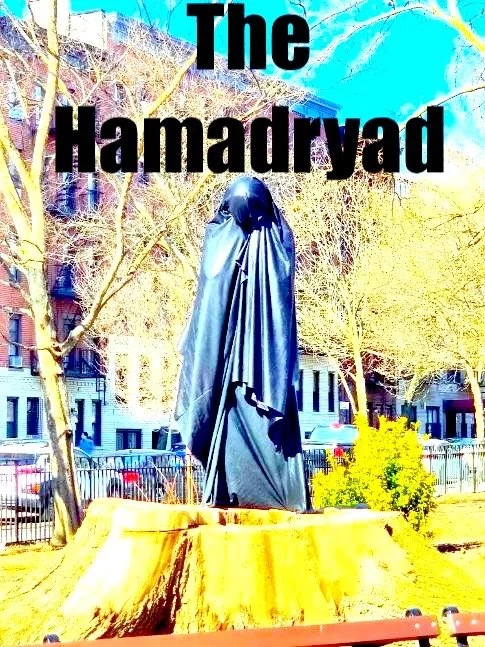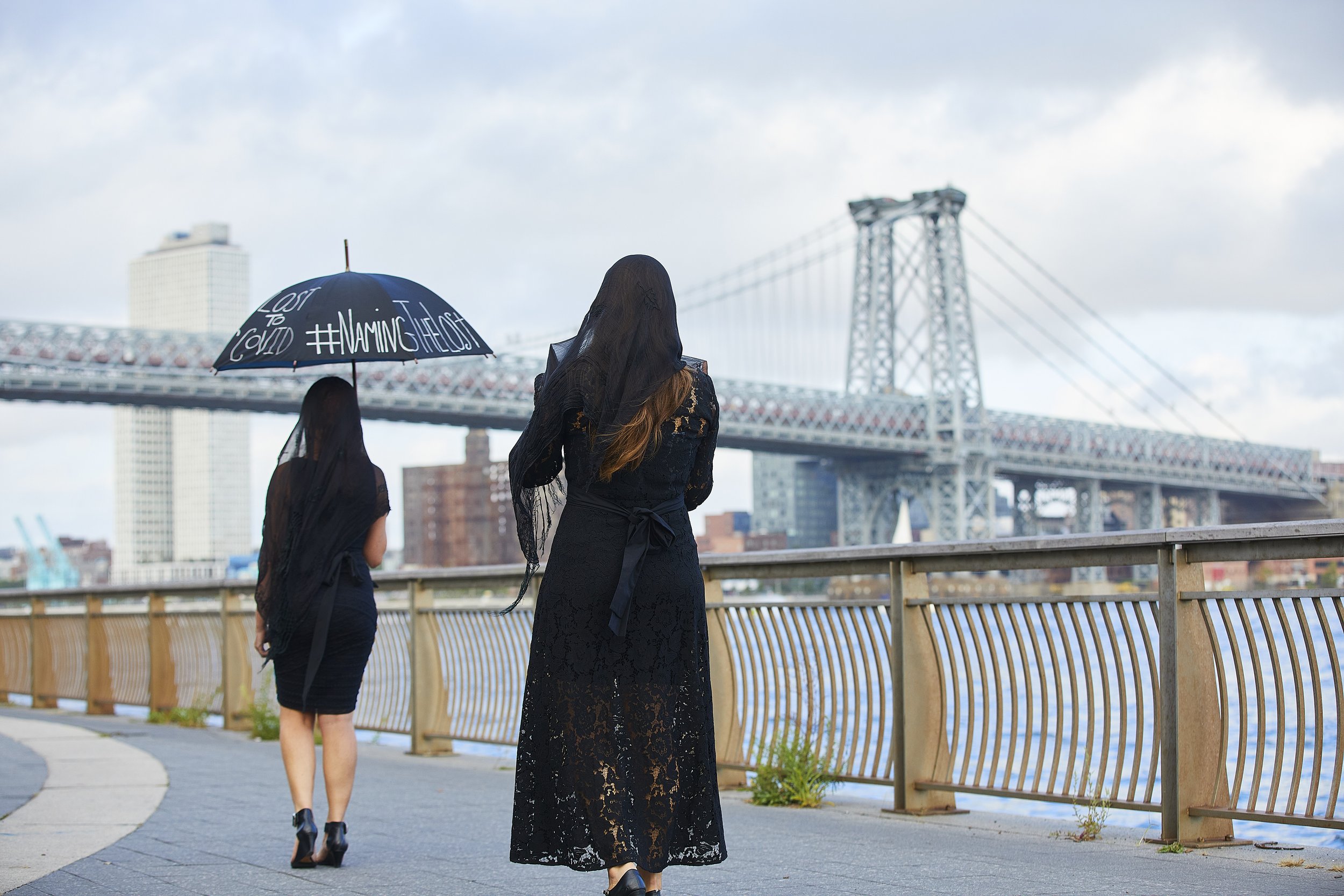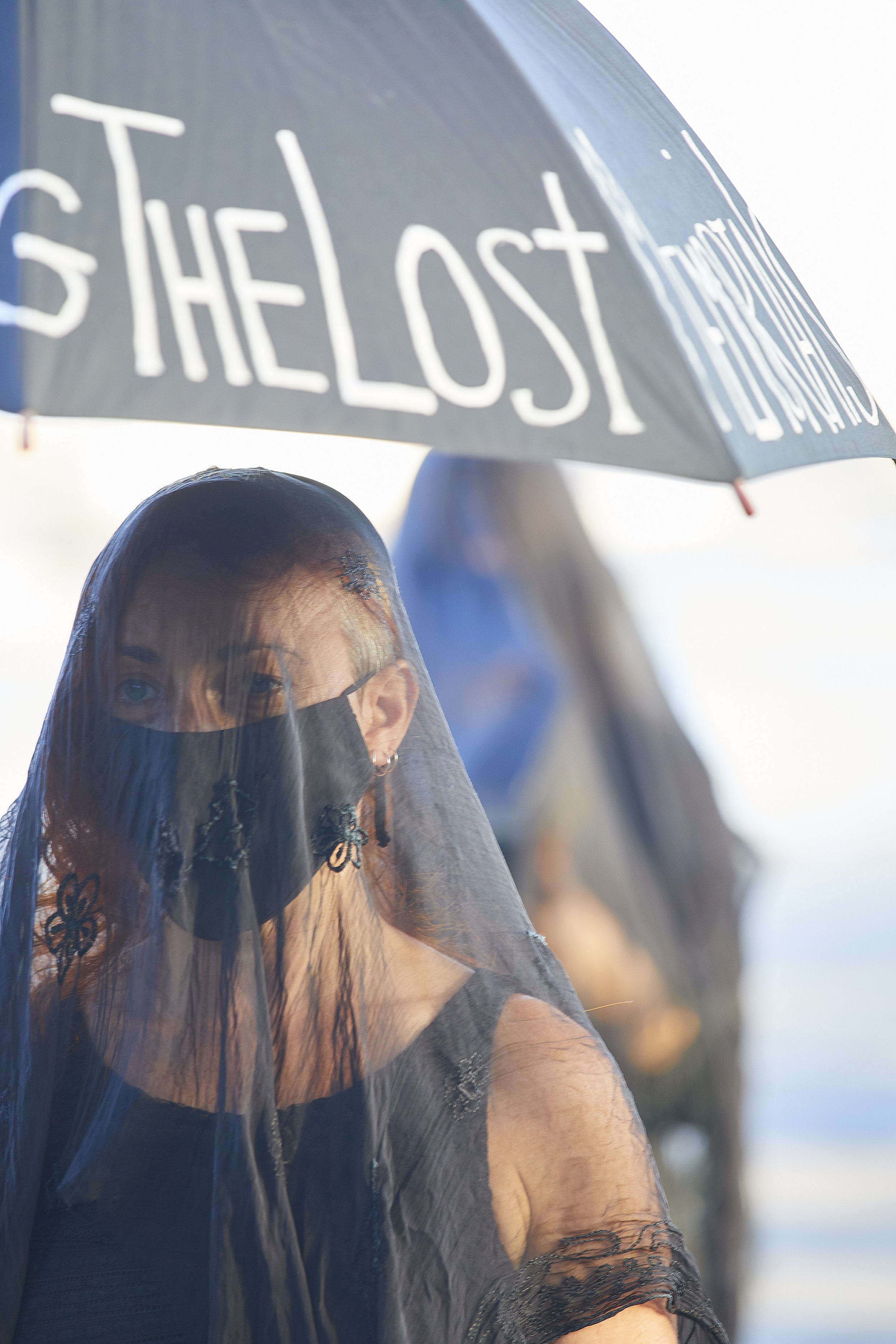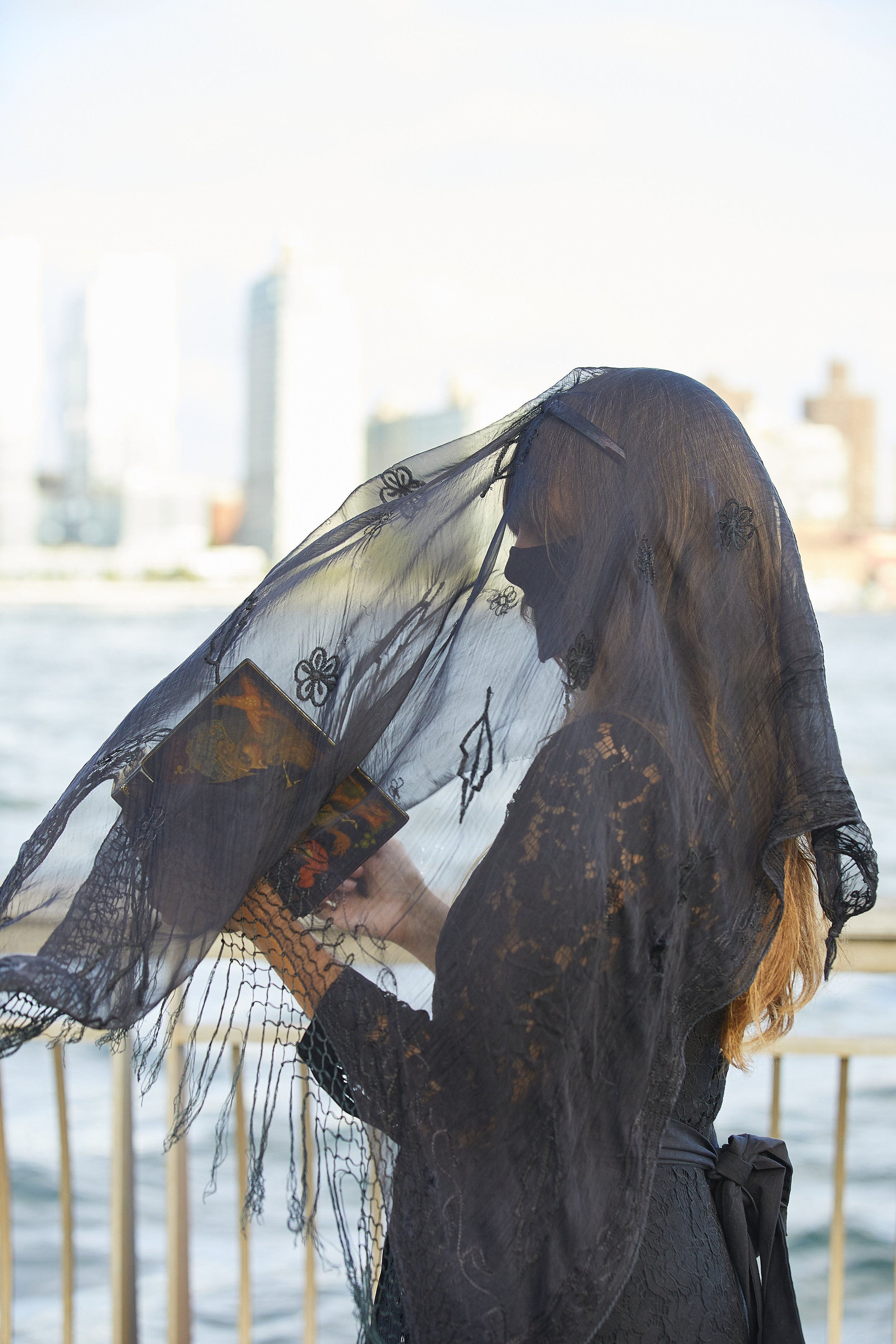Hello Lampost
Hurtle
The Golden Sledgehammer
The On Women Festival hosted by (one of my favorite) theaters The Irondale in the New Media Storytelling section.
While reading Richard Price’s The Overstory, I came across this quote, “No one sees trees. We see fruits, we see nuts, we see wood, we see shade. We see ornaments or pretty fall foliage. Obstacles blocking the road or wrecking the ski slope. Dark, threatening places that must be cleared. Received branches about to crush our roof. We see a cash crop. But trees - trees are invisible.” Bringing together endurance art, street interviews, movement, music and costumes, The Hamadryad, is a story of rebirth. It’s about shedding one’s skin and becoming more aware and attuned to the world around you - both human and otherwise. It is named for The Hamadryad which is a Greek spirit that lived in and protected trees from destruction. In this piece, trees, dark feelings and mourning become visible and visceral. This performance was shot in a park in NYC in March 2021 during the pandemic, using a huge tree trunk as a stage. A separate camera was set up to interview passers-by about their feelings regarding Solastalgia, the pandemic and their reactions to the costumed figure on the tree trunk. The original performance took 3 hours. Because this concept was originally created during the pandemic, it required specific criteria for the performance like social distancing and editing it into a short film. . In the film, there are three separate stories that are related thematically. The first is an erasure of the script Waiting for Godot in which only the stage directions relating to the tree are left intact. The second is a three hour endurance performance which was sped up and fit into 7 minutes. The third story is a recording of the three hour performance.
Naming The Lost Memorials
Artists Kym Bernazky and Sonia Villani memorialize New Yorkers who lost their lives to Covid-19. This was a durational piece that took place on Sunday Sept. 13 2020 in The East River State Park over the course of three hours. For every name Kym read, they both took a step forward. This footage was shot by Jeremiah Cumberbatch.
a veil/avail
a veil / avail
—--------
Veil
a concealing curtain or cover of cloth
something that hides or obscures
to cover, provide, obscure, or conceal with
Avail
help or benefit.
use or take advantage of (an opportunity or available resource)
—--------
...the presumed blandness of White American culture is a crucial part of our national narrative. Scholars describe the power of this plainness as the invisible “center” against which everything else is measured. Upon further reflection, what appears to be an absence in terms of being “cultureless” works more like a superpower. Invisibility, with regard to Whiteness, offers immunity. To be unmarked by race allows you to reap the benefits but escape responsibility for your role in an unjust system. (Benjamin p. 4)
This quote Ruha Benjamin’s Race After Technology has been on repeat ever since I read it. For me, it’s very compelling and eye-opening because it’s an aspect of racism that had never been stated so eloquently. It’s been bouncing around in my brain frequently. One night, I couldn’t sleep. I kept imagining this image of me on the tree trunk in a veil which I had performed before. I wanted to attempt a new version. I thought I was going to write a paper because I didn’t know how to handle this information respectfully. How could the viewer come to some new text and let it inundate their thoughts? I was trepidatious about how to bring the concept to life, being a white person who has been “unmarked.” After doing more research, I came across this abstract for an article called "The Invisible Whiteness of Being: Whiteness, White Supremacy, White Privilege, and Racism” written by Derald Sue Wing which gave me a stronger jumping off point for my performance.
In our society, Whiteness is a default standard; the background of the figure-ground analogy from which all other groups of color are compared, contrasted, and made visible. From this color standard, racial/ethnic minorities are evaluated, judged, and often found to be lacking, inferior, deviant, or abnormal. Because Whiteness is considered to be normative and ideal, it automatically confers dominance on fair skinned people in our society. Whiteness would not be problematic if it weren't (a) predicated on White supremacy, (b) imposed overtly and covertly on People of Color, and (c) made invisible to those who benefit from its existence. Seen from this vantage point, Whiteness is an invisible veil that n cloaks its racist deleterious effects through individuals, organizations, and society. The result is that White people are allowed to enjoy the benefits that accrue to them by virtue of their skin color. Thus, Whiteness, White supremacy, and White privilege are three interlocking forces that disguise racism so it may allow White people to oppress and harm persons of color while maintaining their individual and collective advantage and innocence. If we are to overcome, or at least minimize the forces of racism, we must make Whiteness visible. As long as Whiteness remains invisible and is equated with normality and superiority, People of Color will continue to suffer from its oppressive qualities.
Finding this highlighted quote was like a little truth bomb and it gave my performance the meaning/weight I needed to perform. In this piece, I am embodying this “veil” that lays over Whiteness which gives it a superpower. The effects of this invisibility are deeply ingrained in this fabric as White people have always held the camera, controlled the libraries, written down the histories and organized themselves on top of the hierarchy. The tree trunk I am performing atop stands in for the all time the world has existed with colonization.
Using three yards of cream-colored swatch of spandex lace fabric, I drape/cover myself from head to toe. This fabric resembles a veil and looks as if it’s floating above my skin. Veil has several different meanings which appeals to me in this performance. My stage will be a tree stump in the Tompkin’s Square Park in Manhattan. Tompkin’s Square is drenched in history. For this performance, I’m recalling and re-collecting the memory of Pope L’s besuited crawl (1991). I recorded the performance, as I perform movements from beneath the fabric for thirty minutes. Different body positions are held for a few minutes and then a next position follows.
Why is this important right now? Performing outside in the real world as people walk by with their groceries and eating sandwiches as I interrupt the quotidian world with something jarring, something that shouldn’t be there, something other-wordly, which snaps some of the people to attention, out of their phone’s pull. The passer-bys turn into audience members or collaborators. If I was just doing this in a rehearsal room by myself, there would be no conversation happening. Since I can’t perform without them, the passer-bys/audience is ejected into a new reality. “What is that?” they think to themselves, at least a second. For that second, they are shoe-horned out of their daily routine and thrown off course. “What does it mean?”
Adrian PiIper is a performance artist who wanted to have this effect on the public as well. Her performance was called Catalysis. Piper uses strange and unusual behaviour to spark a reaction from her public onlookers and to further explore how defined and restricted humans are by public order and rules. For example, in “Catalysis I”, Piper walked the streets in clothes that had been soaked in eggs, milk, vinegar, and cod oil for a week. She even wore the clothing on a train in peak hour. “Catalysis I” was intended to see how the public would react to someone deemed ‘unwashed’ or ‘repulsive’...By definition, catalysis is a scientific term that refers to the acceleration of a chemical reaction by a catalyst. In Piper’s body of work, this definition is brought to life because the artist uses absurd behaviour to see how quickly she can spark a reaction in her onlookers, especially as a woman of colour in early 1970s America.”
Like Piper, I hope to” catalyze” a reaction, create a speed bump in the banality of daily life.
The next layer I added to my performance was a repetitive recording of me saying, “veil” and “avail.” As the repetition happens, the multiple definitions of these words are also woven in. My voice-over of Wing’s quote layers in clearly, the last part of the quote is doubled-up - for emphasis. I kept in the soundtrack of the day in the park to anchor it in everyday life. This veil exists in the world and no one sees it or pays attention to it. My embodiment of the veil in the every day world asks the viewer to see something new.
The Queen of Refuse
Buster Keaton often used the circumstances of his surroundings as inspiration for his next stunt - buildings that were being blown up, or a fire. I used my own circumstances of the snowstorm and being trapped in my apartment to make this.




